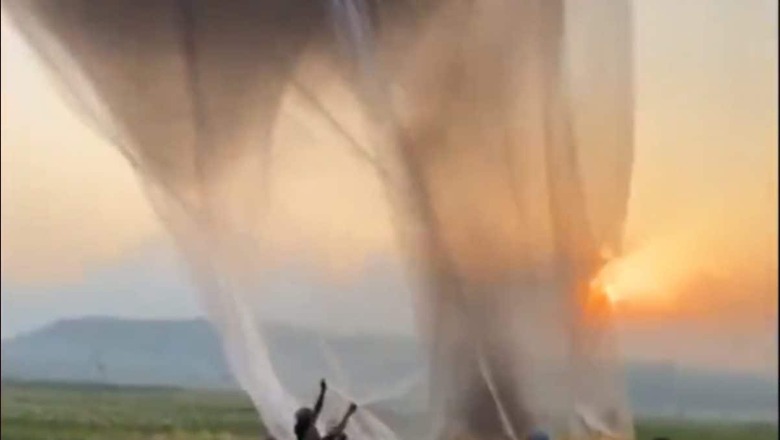
views
Climate change, an undeniable reality, demands immediate and innovative solutions. In a recent revelation on microblogging platform X, a captivating video emerged, shedding light on a community’s spirited and resourceful response to environmental challenges. This unique scene unfolded at a local gathering where individuals gathered not only for warmth around a crackling fire but also to confront the issue of smoke emissions.
What made this gathering truly exceptional was the community’s proactive approach to capturing and containing the smoke emitted from the fire. A group of individuals took charge, using a remarkably simple yet effective method. The scene unfolds with a large plastic bag being strategically held above the fire. As the fire logs burn, the emitted smoke is captured and contained within the bag, creating a visual spectacle resembling a hot air balloon filled with smoke.
The video, shared with the caption “Carbon Capture,” has since gained over 23.8 million views and 66 thousand likes on the social media platform.
Carbon capture pic.twitter.com/sG6nCjrhP3— Crazy Clips (@crazyclipsonly) December 17, 2023
What is Carbon Capture?
Carbon capture, or carbon capture and storage (CCS), aims to reduce the impact of human-made CO2 emissions on the environment. The primary goal is to trap CO2 produced by burning fossil fuels or other industrial processes, preventing it from entering the atmosphere and contributing to global warming.
The Carbon Capture Process:
The first step in carbon capture involves capturing CO2 at its source, which can be a power plant or an industrial facility. Various capture technologies, including post-combustion capture, pre-combustion capture and oxy-fuel combustion, are employed to capture emissions before they are released into the air.
After being captured, the carbon dioxide (CO2) is then transported to an appropriate storage location. This can be achieved through pipelines, ships or other means, depending on the distance and specific characteristics of the capture site and storage location.
The final step is the storage of captured CO2 in geological formations, such as depleted oil and gas fields or deep saline aquifers. By securely storing CO2 underground, it is prevented from entering the atmosphere and contributing to climate change.
Can carbon capture technologies truly combat climate change?
Despite being hailed by some as a potential game-changer, sceptics argue that these solutions might offer only marginal benefits. Critics, including environmentalists and experts like Glen Peters, caution against overreliance on carbon capture, suggesting it could be a hindrance rather than a comprehensive solution.
A recent study revealed that the actual emissions reduction achieved by some systems may fall far short of initial estimates, raising questions about their efficacy. However, proponents argue for a diversified approach, emphasizing the need for multiple modest solutions, and acknowledging that there is no one-size-fits-all remedy for climate change.



















Comments
0 comment